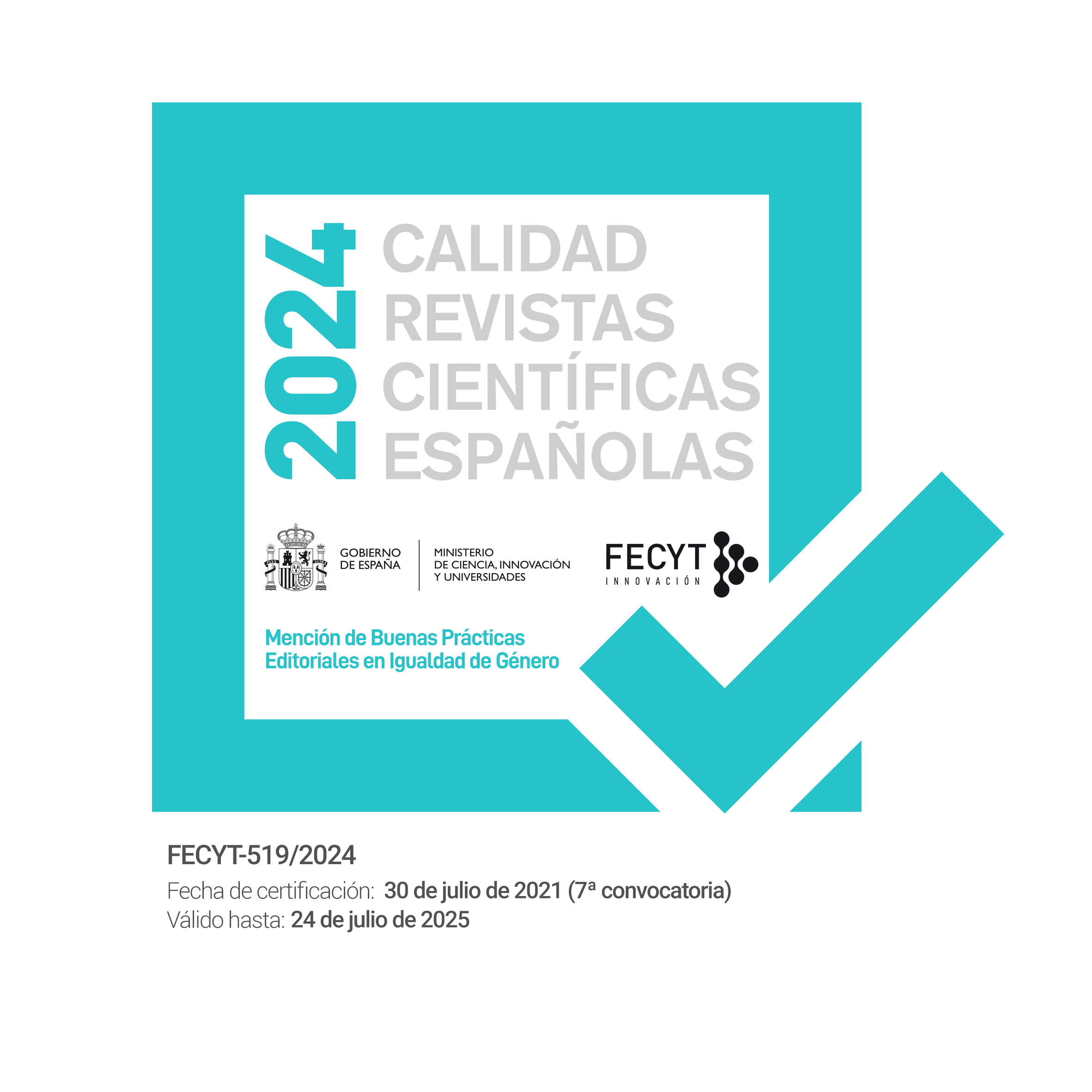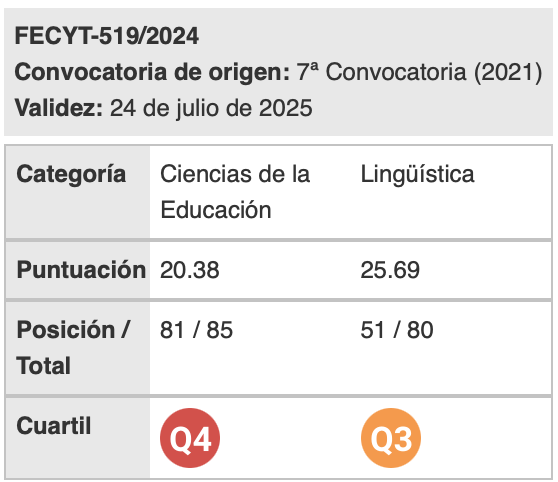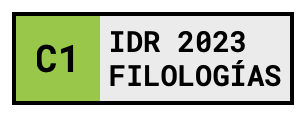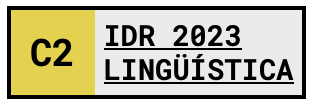Interdisciplinarity and aggressiveness. Characteristics of the lexis of photography
Keywords:
lexis, photography, specialized languages, English for Specific PurposesAbstract
The present paper aims at exploring the language of photography. In particular, it pretends to discover the main lexico-semantic features of the English of photography. It is a qualitative study based on corpus of nearly a million words whose sources have been blogs on photography written by professional photographers. The results show that it is a very rich and varied lexis. On the one hand, we can highlight its interdisciplinarity; photography is not limited to using its own terms but it shares a great number of words with other disciplines. We have found numerous terms inherited from the field of painting, optics, computing, among others. On the other hand, we have concluded that the language of photography presents an aggressive nature. This study intends to contribute to the field of English for Specific Purposes on the one hand, and on the other, to the field of photography, whose importance in the current society is growing.
Downloads
References
Alcaraz Varó, E. (2000). El inglés profesional y académico. Madrid: Alianza.
Alcaraz Varó, E. (2005). El lenguaje de la farmacia: lexicología y lexicografía. En F. Yus & J. Mateo Martínez (Eds.), Thistles: A homage to Brian Hughes (pp. 5-18). Alicante: Universidad de Alicante.
Alcaraz Varó, E., Campos, M.Á. & Miguélez, C. (2007). El Inglés Jurídico Norteamericano. Barcelona: Ariel.
Anthony, L. (2018). Introducing English for Specific Purposes. Abingdon, MA/Nueva York, NY: Routledge.
Belcher, D. (2006). English for Specific Purposes: Teaching to perceived needs and imagined futures in worlds of work, study, and everyday life. TESOL Quarterly, 40(1): 133-156.
Belcher, D. (Ed.) (2009a). English for Specific Purposes in theory and practice. Ann Arbor, MI: University of Michigan Press.
Belcher, D. (2009b). What ESP is and can be: An introduction. En D. Belcher (Ed.), English for Specific Purposes in Theory and Practice (pp. 1-20). Ann Arbor, MI: University of Michigan Press.
Bergh, G. & Ohlander, S. (2012). Free kicks, dribblers and WAGs. Exploring the language of the ‘people’s game’. Moderna språk, 106(1): 11-46.
Bergh, G. & Sölve, O. (2012). English direct loans in European football lexis. En V. Pulcini, F. Rodríguez González & C. Furiassi (Eds.), The Anglicization of European Lexis (pp. 281-304). Amsterdam: John Benjamins.
Biel, Ł., Engberg, J., Martín Ruano, R. & Sosoni, V. (Eds.), (2019). Research Methods in Legal Translation and Interpreting: Crossing Methodological Boundaries. Abingdon, MA/Nueva York, NY: Routledge.
Brown, J.D. (2016). Introducing needs analysis and English for Specific Purposes. Nueva York, NY/Londres: Routledge.
Cambridge Dictionary disponible en https://www.cambridge.org
Campos, M.Á. (2016). Increasing metaphor awareness in Legal English teaching. ESP Today, 4(2): 165-183.
Campos, M.Á. (2017). ‘Liaison magistrates’ and ‘contact points’ as a ‘remedy’ against ‘high levels of mistrust’: Metaphorical imagery in scholarly papers on EU judicial cooperation. Ibérica, 34: 231-255.
Campos, M.Á., Constantinescu, R., Erbeznik, A., Ferrara, C., Jannelli, L., Mazur, D., Petralikova, D., Samaniego Fernández, E., Walbaum Robinson, I.A. & Domuta, C. (2017). English for Human Rights EU Law. Bruselas: Comisión Europea.
Castellanos, P. (1999). Diccionario histórico de la fotografía. Madrid: Ediciones Istmo.
Castelo Sardina, L. (2001). Usos no normativos del lenguaje fotográfico. Tesis doctoral de la Universidad Complutense de Madrid.
Cohen, K. R. (2005). What does the photoblog want? Media, Culture & Society, 27(6), 883-901.
Dudley-Evans, T. & St John, M.J. (1998). Developments in English for Specific Purposes: A Multi-Disciplinary Approach. Cambridge: Cambridge University Press.
Ellis, M. & Johnson, C. (1994). Teaching Business English. Oxford: Oxford University Press.
Ferguson, G. (2013). English for Medical Purposes. En B. Paltridge y S. Starfield (Eds.), The Handbook of English for Specific Purposes (Vol. 120), (pp. 243-261). Oxford/Malden/Chichester: John Wiley & Sons.
Gállego Paz, R. (2002a). Notas sobre la historia del léxico de la fotografía en español. En M. T. Echenique & J. P. Sánchez Méndez (Eds.), Actas del V Congreso Internacional de Historia de la Lengua Española (pp. 2051-2062). Madrid: Gredos.
Gállego Paz, R. (2002b). El léxico técnico de la fotografía en español en el siglo XIX. Tesis Doctoral de la Universidad Rovira i Virgili.
Gállego Paz, R. (2003). El léxico de la fotografía en los textos del siglo XIX en España. Asclepio, 55(2), 135-158.
Garnelo Díez, M. I. (2005). La fotografía de creación: análisis de los fondos fotográficos de destacadas instituciones públicas y privadas de Andalucía. Tesis doctoral de la Universidad de Málaga.
Haigh, R. (2018). Legal English. Abingdon, MA/Nueva York, NY: Routledge.
Herschdorfer, N. (2015). The Thames & Hudson Dictionary of Photography. LondonLondres: Thames & Hudson.
Hutchinson, T. & Waters, A. (1987). English for Specific Purposes. Cambridge: Cambridge University Press.
Hyland, K. (2007). English for Specific Purposes. En J. Cummins & C. Davison (Eds.), (2007). International Handbook of English Language Teaching (pp. 391-402). Boston, MA: Springer.
Hyland, K. (2019). English for Specific Purposes: some influences and impacts. En X. Gao (Ed.), Second Handbook of English Language Teaching (pp. 337-353). Sídney: Springer.
Hyon, S. (2017). Introducing Genre and English for Specific Purposes. Londres: Routledge.
Jay, B. (1984). The photographer as aggressor. En A. Trachtenberg & D. Featherstone (Eds.), Observations: essays on documentary photography (pp. 7-23). San Francisco, CA: The Friends of Photography.
Johns, A.M. & Dudley‐Evans, T. (1991). English for Specific Purposes: International in scope, specific in purpose. TESOL Quarterly, 25(2), 297-314.
Johns, A.M., Paltridge, B. & Belcher, D. (2011). Introduction: New directions for ESP research. En D. Belcher, A.M. Johns & B. Paltridge (Eds.), New Directions in English for Specific Purposes Research (pp. 1-4). Ann Arbor, MI: University of Michigan Press.
Korstanje, M.E. (2010). Supremacy of English in tourism research. Anatolia, 21(2) 383-387.
Landau, P. (2002). Empires of the visual: Photography and colonial administration in Africa. En P. Landau & D. Kaspin (Eds.), Images and empires: Visuality in colonial and postcolonial Africa, (pp. 141-171). Los Angeles, CA: University of California Press.
Lynch-Johnt, B. & Perkins, M. (2008). Illustrated dictionary of photography: The professional’s guide to terms and techniques for film and digital imaging. Buffalo, NY: Amherst Media.
Merriam-Webster Dictionary disponible en <https://www.merriam-webster.com>
Mykytka, I. (2016). Metaphors in photography language. Ibérica: Revista de la Asociación Europea de Lenguas para Fines Específicos (AELFE), (32), 59-86.
Mykytka, I. (2017). The influence of English on the Spanish register of photography: An empirical study. ESP Today, 5(1), 68-90.
Navab, A. D. (2001). Re-picturing photography: A language in the making. Journal of Aesthetic Education, 35(1), 69-84.
Newhall, B. (2002). Historia de la fotografía [The history of photography from 1839 to the present], traducido por Homero Alsina Thevenet. Barcelona: Gustavo Gili.
Nickerson, C. & Planken, B. (2015). Introducing Business English. Nueva York, NY/Londres: Routledge.
Oshima, A., Hogue, A. & Lê, H.L. (2006). Writing Academic English, 4a ed. White Plains, NY: Longman.
Oxford English Dictionary disponible en <https://www.oed.com>
Paltridge, B. & Starfield, S. (2017). English for Specific Purposes. En E. Hinkel (Ed.), Handbook of Research in Second Language Teaching and Learning (Vol. 3), (pp. 56-67). Nueva York, NY/Londres: Routledge.
Paltridge, B. & Starfield, S. (Eds.) (2013). The Handbook of English for Specific Purposes (Vol. 120). Oxford/Malden/Chichester: John Wiley & Sons.
Peres, M. R. (Ed.). (2013). The focal encyclopedia of photography, 4a ed. Abingdon, MA/Burlington, VT: Taylor & Francis.
Pérez-Llantada, C. & Swales, J. (2017). English for Academic Purposes. En E. Hinkel (Ed.), Handbook of Research in Second Language Teaching and Learning (Vol. 3), (pp. 42- 55). Nueva York, NY/Londres: Routledge.
Pontrandolfo, G. (2016). Fraseología y lenguaje judicial. Las sentencias penales desde una perspectiva contrastiva. Roma: Aracne.
Robinson, P. (1991). ESP Today: A Practitioner’s Guide. Hemel Hempstead: Prentice Hall International.
Scarcella, R. (2003). Academic English: A conceptual framework. <https://escholarship.org/uc/item/6pd082d4> [15/04/2020]
Scharf, A. (1994). Arte y fotografía. Madrid: Alianza.
Sontag, S. (1977). On Photography. Nueva York, NY: Straus and Giroux Macmillan.
Soriano, T. (2012). El lenguaje de la fotografía. <https://www.tinosoriano.com/blog/2012/08/el-lenguaje-de-la-fotografia.html> [21/01/2020]
Starfield, S. (2016). English for Specific Purposes. En G. Hall (Ed.), The Routledge Handbook of English Language Teaching (pp. 150-164). Nueva York, NY/Londres: Routledge.
Stelzer, O. (1981). Arte y fotografía. Contactos, influencias y efectos [Kunst und photographie. Kontakte. Einflüsse. Wirkungen], traducido por Michael Faber-Kaise. Barcelona: Gustavo Gili.
Sutton, T. (1858). “A” dictionary of photography. Londres: Sampson Low.
Swales, J. (1985). Episodes in ESP. Oxford: Pergamon Press.
Swales, J. & Feak, C.B. (2004). Academic Writing for Graduate Students: Essential Tasks and Skills. Ann Arbor, MI: University of Michigan Press.
Szarkowski, J. (1978). Mirrors and windows: American photography since 1960. Nueva York, NY: Little Brown & Co.
Walker, R. & Harding, K. (2009). Oxford English for Careers: Tourism 1: Student's Book. Oxford: Oxford University Press.
Wilder, K. (2009a). Photography and the Art of Science. Visual Studies, 24(2),163-168.
Wilder, K. (2009b). Photography and Science. Londres: Reaktion Books.
Downloads
Published
How to Cite
Issue
Section
License
Authors who publish with this journal agree to the following terms:
- Authors retain copyright and grant the journal right of first publication with the work simultaneously licensed under a Creative Commons Attribution License that allows others to share the work with an acknowledgement of the work's authorship and initial publication in this journal.
- Authors are able to enter into separate, additional contractual arrangements for the non-exclusive distribution of the journal's published version of the work (e.g., post it to an institutional repository or publish it in a book), with an acknowledgement of its initial publication in this journal.
- Authors are permitted and encouraged to post their work online (e.g., in institutional repositories or on their website) prior to and during the submission process, as it can lead to productive exchanges, as well as earlier and greater citation of published work (See The Effect of Open Access).

Revista de Lenguas para fines específicos is licensed under a Creative Commons Reconocimiento-NoComercial-SinObraDerivada 4.0 Internacional License.

























